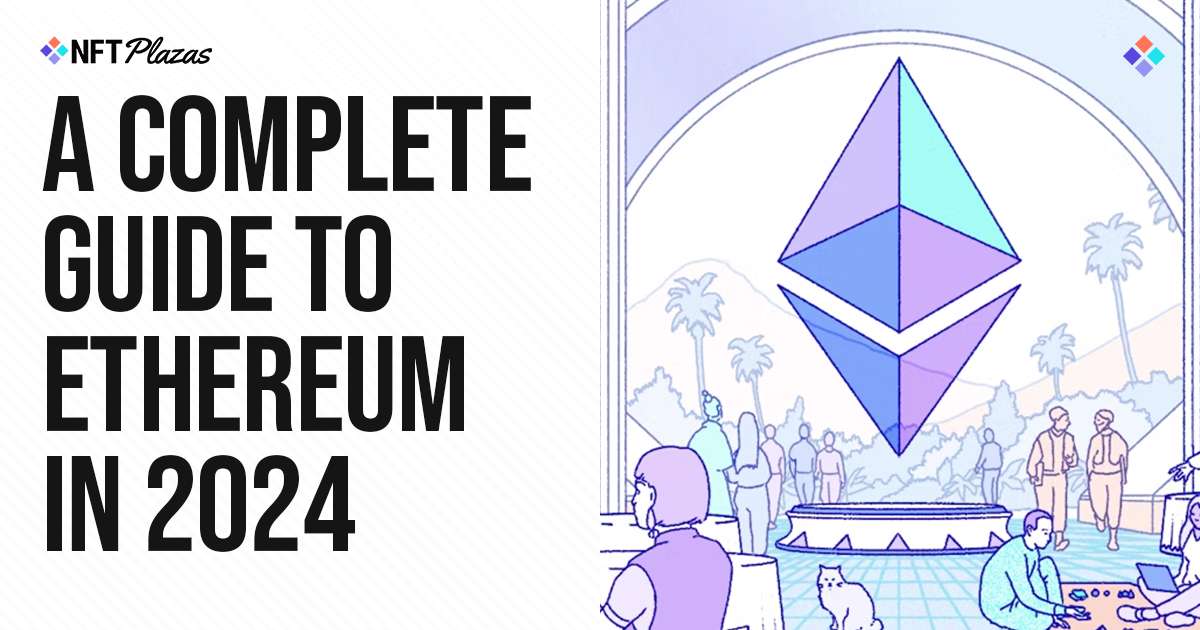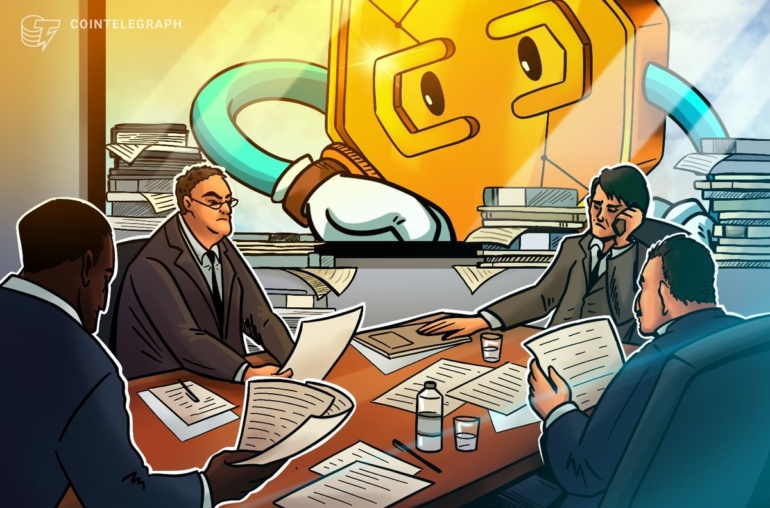One blockchain is at the heart of the modern web3 landscape – Ethereum.As the first blockchain to support smart contracts, and therefore decentralized applications (dApps), Ethereum revolutionized the potential of blockchain technology – and today, it forms the sturdy core that so many facets of the industry branch from: NFTs, web3 gaming, DeFi and more.Rather than resting on its laurels, Ethereum has a dedicated development team that’s forever looking to push the boundaries of web3 technology even further – but what are these developments? How has Ethereum become a vital part of blockchain technology, and what should you know about its past, present, and future?Here’s our complete guide to Ethereum in 2024. Source: EthereumWhat is Ethereum?Ethereum is the brainchild of Vitalik Buterin, a talented programmer and co-founder of Bitcoin Magazine, who conceived the idea of a blockchain that could support decentralized applications in 2013.Following crowdfunding efforts in 2014, Buterin – working alongside Gavin Wood, Charles Hoskinson, Anthony Di Iorio and Joseph Lubin – launched the Layer-1 Ethereum blockchain on July 30, 2015, with Ether (ETH) as its operational token.Ethereum was the first blockchain to allow developers to build dedicated applications for blockchain technology, starting a boom period that catapulted the web3 industry forwards. ETH quickly grew to become the world’s second-largest cryptocurrency – which it still holds today – and the operating core of the blockchain landscape we know today.As development continued, Ethereum became central to some of the most influential apps in our ecosystem today, such as OpenSea, Uniswap and MakerDAO (now Sky). On top of this, Ethereum was the first blockchain to see growth via dedicated Layer-2 blockchains, such as Polygon and Immutable, allowing areas such as blockchain gaming to flourish.Now in 2024, Ethereum continues to focus on scalability, cost reduction and decentralization, with a long-term roadmap that’s set to both improve and safeguard the future of the blockchain landscape as a whole. Source: EthereumHow does Ethereum work?Ethereum’s real innovation is the Ethereum Virtual Machine (EVM), a Turing-complete system that allows developers to write smart contracts, which allow for the development of blockchain-based apps. These apps are written in Solidity, a dedicated programming language for smart contracts.The Ethereum blockchain uses a fee structure to execute transactions. Each transaction requires a certain amount of computational power to complete, and the user must pay a Gas fee (in ETH) to cover the cost of using this power. The amount of gas required varies on the size of the transaction, and how busy the Ethereum network is at the time.In late 2017, the popularity of CryptoKitties – one of the first blockchain games – slowed Ethereum to a crawl and sent gas fees through the roof. Since then, Ethereum has doubled-down on efforts to improve speeds, bolster reliability and reduce fees – with the transition from the Proof-of-Work to Proof-of-Stake in September 2022 both slashing Ethereum’s environmental impact, and providing the foundation for the modern Ethereum we see today.Today, Ethereum is a foundational blockchain for a wide array of fledgling web3 industries, including finance, web3 gaming, decentralized social media, supply chain management, and much more. Source: EthereumThe History of EthereumEthereum’s journey began in late 2013 when Vitalik Buterin published the Ethereum whitepaper proposing a blockchain with a built-in programming language – and after gaining traction, alongside an $18M crowdfunding effort – the Ethereum mainnet went live on July 30, 2015.In 2016, a vulnerability in the smart contract of The DAO was exploited, resulting in a loss of $50 million USD worth of Ether. To rectify the situation, the community voted for a hard fork, leading to the creation of two separate blockchains: Ethereum (ETH) and Ethereum Classic (ETC).Ethereum experienced heavy congestion in late 2017 thanks to the popularity of CryptoKitties, which spurned the creation and popularity of dedicated Layer-2 blockchain such as Polygon and Immutable, and served as inspiration for a new cohort of Layer-1 blockchains, such as Flow, Avalanche, and Solana.One of the most pivotal upgrades in Ethereum’s history happened in September 2022. “The Merge”, which transitioned Ethereum from Proof-of-Work to Proof-of-Stake, reduced Ethereum’s energy consumption by 99%, laid the groundwork for a new validator methodology, and was the first step in helping to slash gas fees – which at the time of writing, are amongst the lowest they have ever been.Ethereum’s most recent major update, Dencun, took place in March 2024, with the aim to reduce fees on Layer-2 networks. This is the latest update aimed at boosting scalability, reliability and the user experience, future-proofing the industry and working towards an “Ethereum 2.0” future.In July 2024, Ethereum became the second cryptocurrency for which exchange-traded funds (ETFs) were approved by the U.S. SEC, with Ethereum ETFs exposing the blockchain and the ETH cryptocurrency to swathes of institutional investors and millions of everyday people around the world.As Ethereum continues to innovate, its influence as a leader in blockchain technology and the digital economy is only set to grow. Though 2024 sees a more competitive Layer-1 environment than ever before, Ethereum is still firmly ahead as the leading smart contract blockchain, and it will continue to be a cornerstone of the web3 industry for many years to come.
Source link



